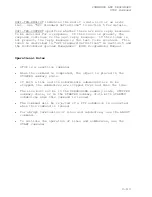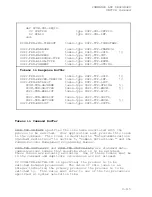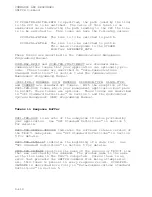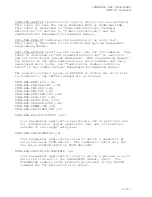
TR3271 EVENT MANAGEMENT
Critical Events
CRITICAL EVENTS
Events reported by the TR3271 subsystem are divided into two
classes: critical events and noncritical events. Critical
events are errors and warnings for which the consequences could
be serious, such as a hardware failure or a software error
from which there is no recovery. Noncritical events are often
expected events that are informational in nature, such as a line
becoming ready.
To determine whether or not an event message reports a critical
event, examine the value of the event-message token ZEMS-TKN-
EMPHASIS. If the value is ZSPI-VAL-TRUE, the event message
reports a critical event. If the value is ZSPI-VAL-FALSE, the
event is not critical.
EVENT-MANAGEMENT PROGRAMMING
The buffer size for a TR3271 event message is 512 bytes. The
value ZTR3-VAL-EVT-BUFLEN defines the buffer size for TR3271.
TR3271 event messages are made up of individual tokens, each
containing one piece of information about the event. There are
no extensible structured tokens or lists in these event messages.
Some TR3271 event messages are reported to EMS, some are reported
to both EMS and the Tandem Maintenance and Diagnostic System
(TMDS), and some only to TMDS. TMDS events are intended for
internal Tandem use only and will not be discussed in this
manual. All messages are also displayed on the operator console
which is controlled by the compatibility distributor ($Z0).
The TR3271 subsystem does not report action events (events that
require operator intervention).
EMS provides you with the capability to create programs called
filters that allow applications to select particular event
messages from among all the event messages that have been issued.
Filters select event messages to be returned to an application by
examining the values of tokens in the event message.
For example, to select only event messages issued by the TR3271
subsystem, a filter would examine the token that contains the
subsystem ID of the issuing subsystem and pass through only those
messages containing the TR3271 subsystem ID.
7-3
















































